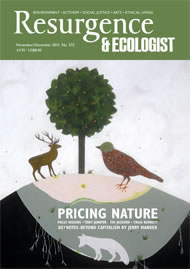Christopher Alexander’s new book, The Battle for the Life and Beauty of the Earth, will interest three sorts of reader. The first is anyone who cares about deep ideas in architecture – hardly surprisingly, as Alexander is a brilliantly thoughtful architect. It will also be attractive to anyone with an interest in profound ideas; the battle he refers to is between an organic and a mechanistic view of the world, which plays out in many fields. Finally, it will appeal to anyone looking for a dramatic story. At first the title seems over the top but it is justified by the saga Alexander tells of the construction of Eishin Campus.
Eishin is a high-school campus set outside Tokyo, complete with a charming set of buildings and small lake, which Alexander built in 1985. I have visited Eishin, and my main memory is of a lovely and tranquil place. That this charming school was the cause of a battle involving giant Japanese construction firms, boardroom backstabbing and even the Yakuza is astonishing.
The reason the construction of Eishin caused such conflict is testament to how important Alexander’s ideas are. He describes his approach to building as System A, which hardly seems radical to the layperson. He believes in sketching out the plans and doing that work as much as possible on-site so that he gets a real feel for the place. Then, as construction proceeds, those sketches come to life and are continually tweaked as the work unfolds. What might have been conceived as a two-metre entrance may work better just a little bit wider. A wall, once in place, might not feel quite right and might need some ornamentation. No problem: the architect is the builder and can readily make the changes. System A is an organic, evolutionary approach, always adjusting the elements so that the whole feels right.
That approach hardly sounds like a declaration of war, yet, as Alexander explains in this book, it is utterly at odds with the belief system and processes that most architects use. System B, as Alexander describes it, has an architect draft a detailed plan on paper. This paper is then handed to a builder, who attempts to build it as cheaply as possible in order to maximise profit.
Anyone can see that the battle between System A and System B is by no means limited to architecture. There is a frightening gap between how the two systems perceive reality. Can the world be abstracted onto paper such that the blueprint and the actual construction of a building can sit disconnected in two different realms? Or is the world a place where meaningful work must be done step by step, in what Alexander calls “wholeness-enhancing transformations”, where each move is made to make things a little better, a little more beautiful, a little more alive?
Readers of neuroscience may be familiar with the work of Iain McGilchrist. In The Master and His Emissary (reviewed in Resurgence 261), McGilchrist talks about the battle between the right brain’s holistic take on the world and the left brain’s abstract approach to modelling reality. While both have value, McGilchrist points out that the left brain is utterly intolerant of the right brain’s worldview. Similarly it was this dramatic intolerance of System B for System A, this utter inability to conceive that Alexander’s approach could work, that was behind the intrigue that dogged the Eishin project.
If you are interested in making change in the world, you should read this book. It shows that between a beautiful set of ideas and a beautiful end result lies a brutal battleground of people indoctrinated into different views. Add to that the commercial interests at stake, and you have a very troubling situation that will test anyone’s courage. Yet Alexander and his team did succeed. You can feel the proof of that as you walk around Eishin. So perhaps that’s the final gift of the book. It delivers not just ideas and stories, but also the courage to persist in doing something valuable.







